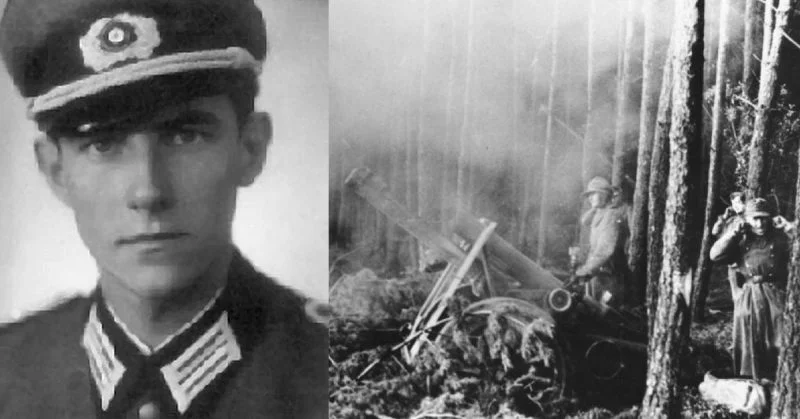The story of Friedrich Lengfeld is one which is not so common in history. Occasionally we hear of soldiers who throw their bodies into the arms of death for their comrades to live. But how often do we hear about those who put their lives on the line to save the enemy?
Born on November 29, 1921 in Grunwald, a village in Lower Silesia, Friedrich Lengfeld was a lieutenant in Germany’s armed forces. He was a company commander of 2nd Company, Fusilier Battalion, 275th Infantry Division when he died.
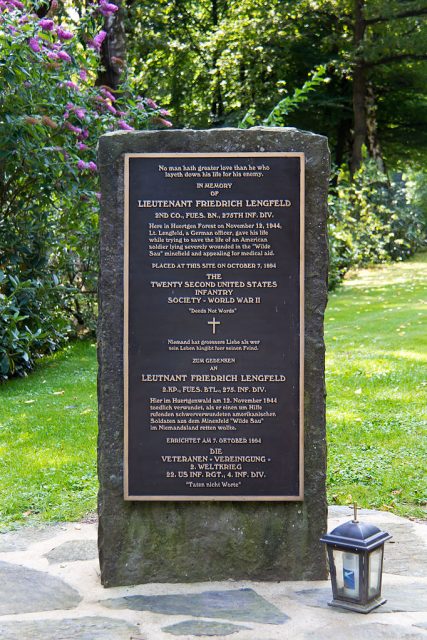
Lengfeld’s early life before he joined the Wehrmacht remains largely unknown. However, during his service, Lengfeld turned out to be a leader who did not cower in the face of danger. He was repeatedly injured during operations on the Eastern Front, and was honored for it on various occasions.
According to Hubert Gees, his dispatcher, Lengfeld never told his men to “Go on,” instead he always said “follow me, ” bravely leading the way through constant threats from Allied troops.
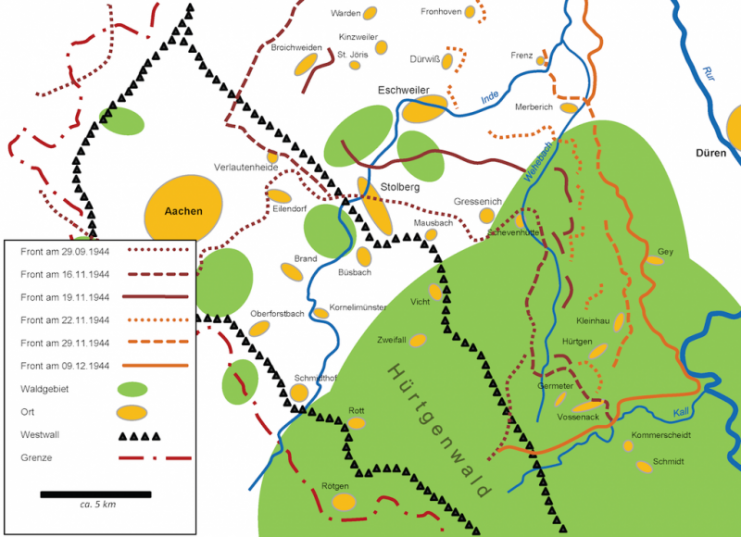
It was in the Battle of Hürtgen Forest (Hürtgenwald in German) in 1944 that Lengfeld’s memory was immortalized.
Hürtgenwald remains among the most catastrophic battles of WWII for the U.S. Army. Over 30,000 American casualties resulted from over 6 months of fighting that began in September 1944, and many more troops were completely worn out by the fierce combat in the thick forests and steep, narrow paths of the region.
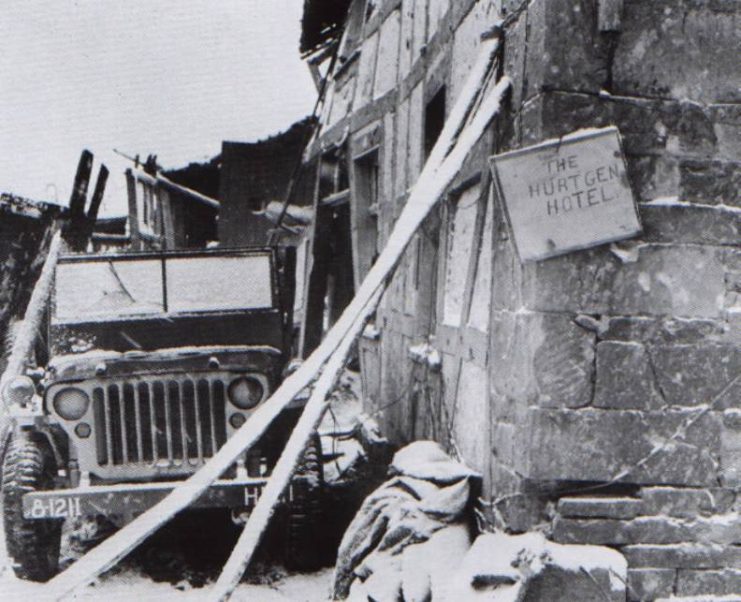
Despite its designation as one of the biggest disasters faced by American troops in WWII, the events that happened in Hürtgenwald went largely unpublicized.
While telling of his experiences in the fighting at Hürtgenwald, Ernest Hemingway wrote in Collier’s magazine: “Whoever survived Hürtgenwald must have had a guardian angel on each of his shoulders.”
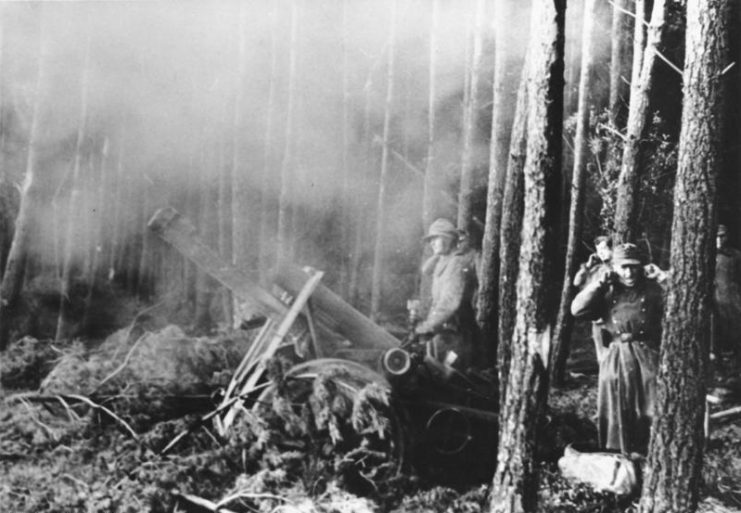
By November 10, 1944, the US offensive in the Northern Eiffel Region was well underway. Bitter combat raged when a highly efficient German defense engaged the US troops at Hürtgen.
Fierce artillery duels alongside tank battles wrecked the terrain as the men on both sides fought exhaustively in the cold, foggy atmosphere, tramping through the mud. During the grim strikes and counterstrikes, trees fell against each other, men collapsed into puddles in death and exhaustion, and casualty rates continued to climb.
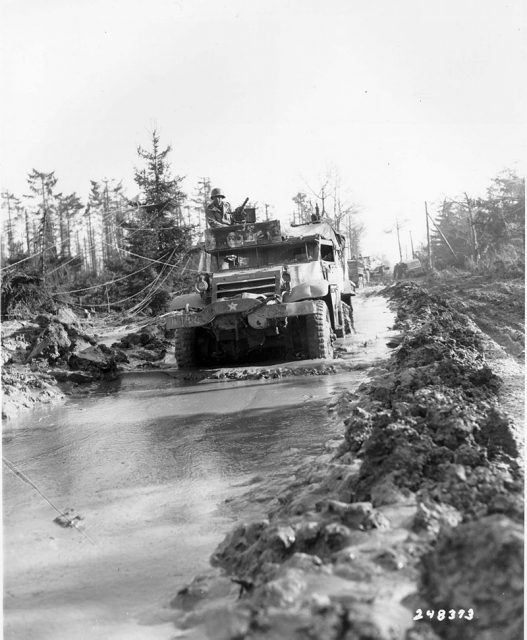
During these events, Lengfeld lead a reconnaissance unit into an American outpost to gather intelligence. However, a sudden outbreak of hostile exchanges ensued at the southwest part of Hürtgen, and in the half-hour long combat, Lengfeld and his reconnaissance group were besieged.
In the early morning hours of November 12, after the strategically important Forester’s House had been recovered yet again from the Americans, Lengfeld led his very depleted rifle company through the region.
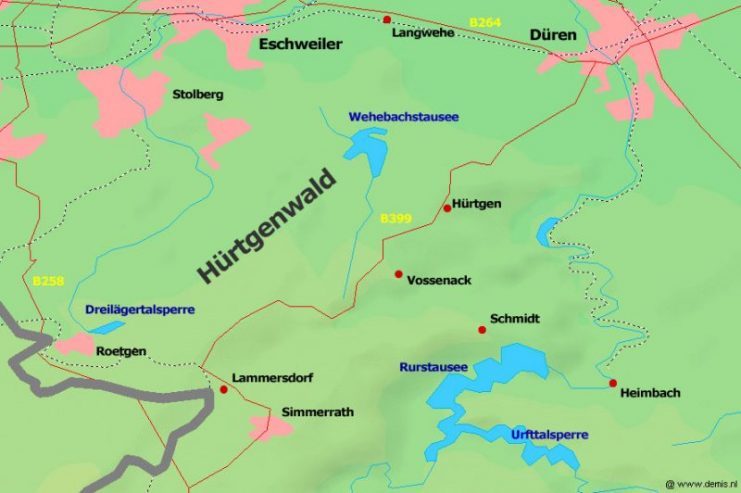
A cry was suddenly heard from the “Wilde Sau” minefield nearby. It turned out to be an American soldier.
The soldier had been severely injured and was lying in the middle of the minefield in the eastern part of the “No Man’s Land” separating the German and American lines.
His pitiful cries for help kept ringing through the cold morning. Quite unfortunately for this soldier, there were no Americans nearby to hear him. He had been left behind by his unit during a retreat.

The soldier’s cries continued relentlessly, losing strength as exhaustion slowly took over him. Lengfeld, in a first act of pity, sent word to the machine gun unit guarding the road. He ordered the machine gunners to hold their fire if any American paramedics should show up for the wounded soldier.
However, by 10:30 AM, the man’s voice was still calling for help. If left alone indefinitely in that open place, he would die from his wounds and the cold. His cries became unbearable, desperately tugging at Lengfeld’s conscience.
At that moment, Lengfeld no longer heard the voice of an enemy. It was the voice of a fellow man drowning in an ocean of pain.
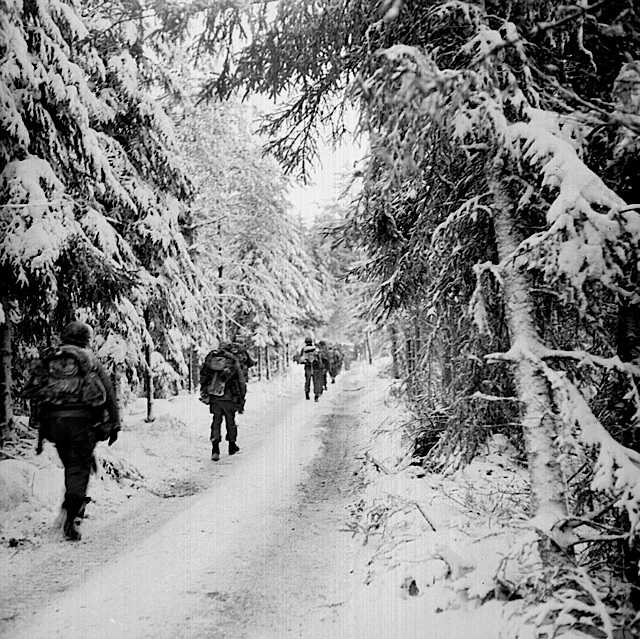
He ordered his own paramedic unit to form a rescue team. The team put on some Red Cross vests and followed Lengfeld, who led them down the road towards the wounded soldier, successfully avoiding anti-tank mines. As they caught sight of the American, however, Lengfeld made to cross the road to where the soldier was, and stepped on an anti-personnel mine.
The resulting explosion blew two deep holes in his back and caused severe internal injuries. He lay on the ground groaning in pain as the rest of the German rescue team stared in a melange of shock and sadness.
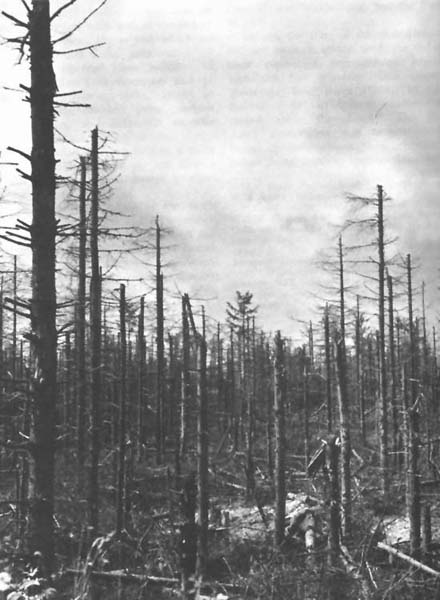
They quickly rushed him to the Medical Aid Station located in Lucas Mill, Hürtgenwald. After attempts to dress his wounds, he was transferred to Froitzheim. That evening, Lieutenant Friedrich Lengfeld drew his last breath.
Nothing is known about the fate of the wounded American.
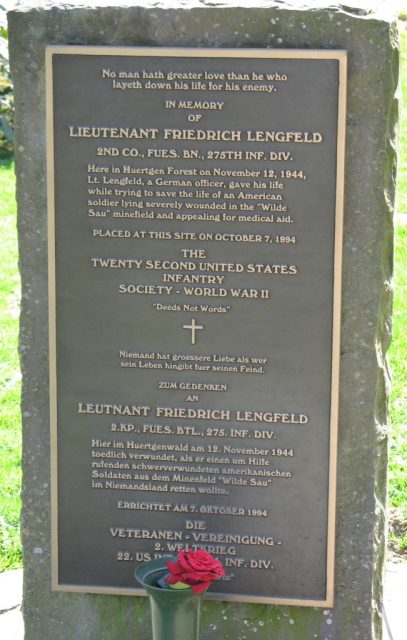
At the time of his death, Lieutenant Lengfeld was only 23 years old, just two weeks away from his 24th birthday.
A monument to honor Lengfeld was raised on October 7, 1994, near the entrance of the War Cemetery in Hürtgenwald by members of the 22nd Infantry Regiment of the US Army.
Most of the story about Lengfeld is based on an eyewitness narration from Hubert Gees.
Lenfeld is the only German soldier of WWII who has a monument raised in his honor by Americans. On the monument is an inscription that reads: “No man hath greater love than he who layeth down his life for his enemy.”
